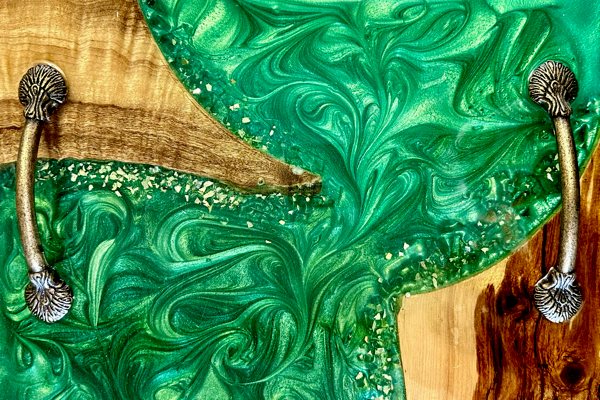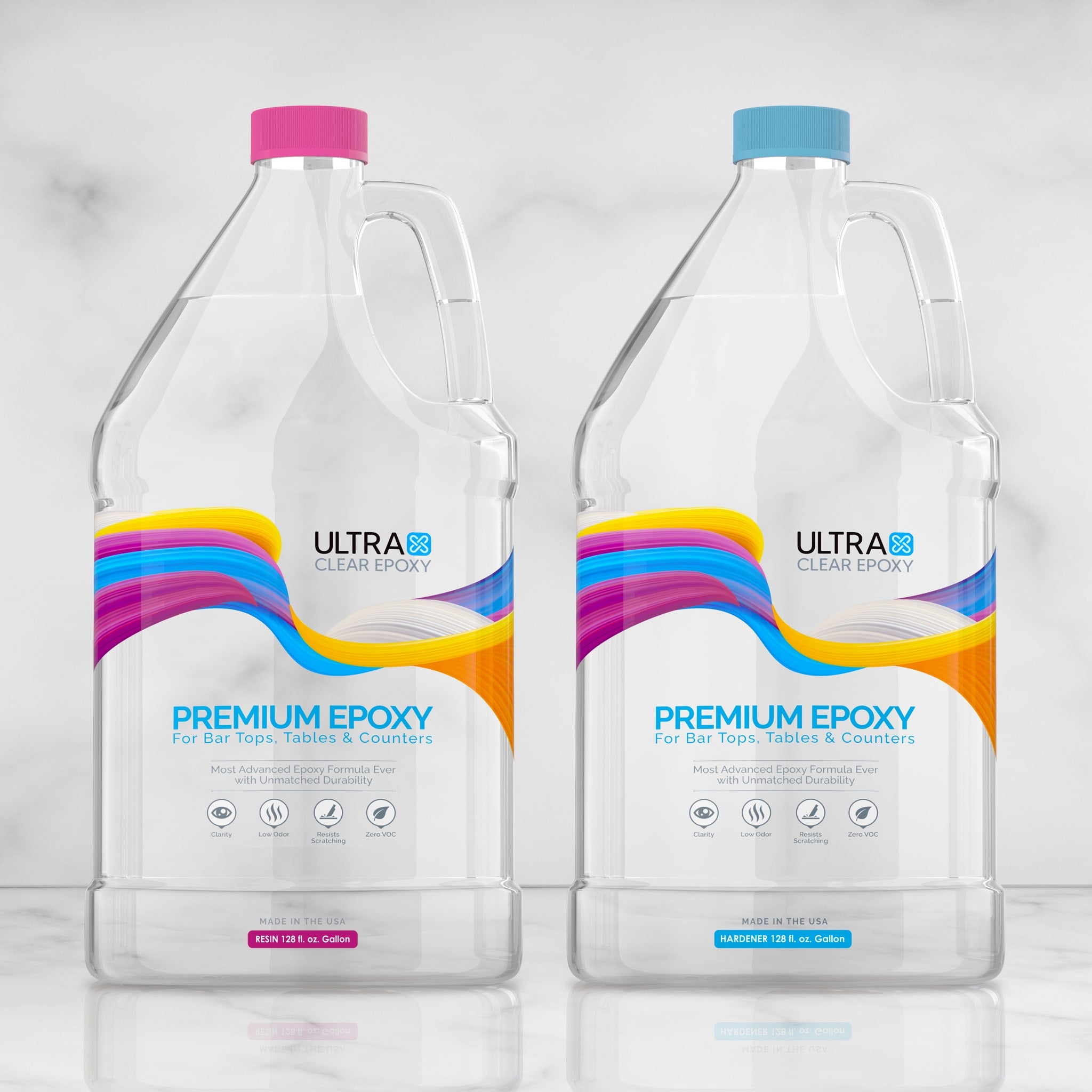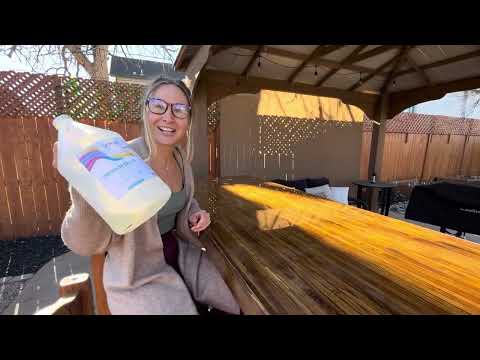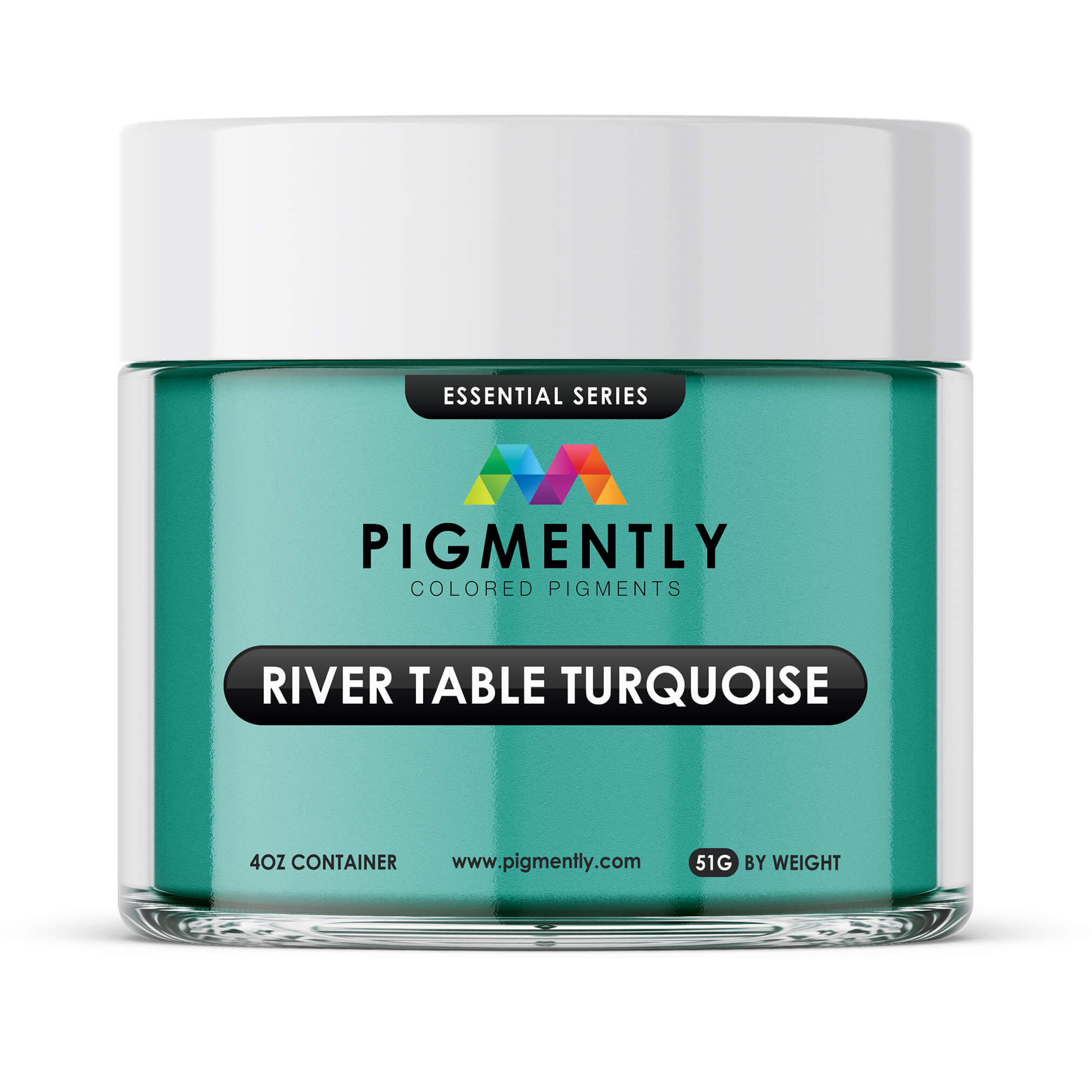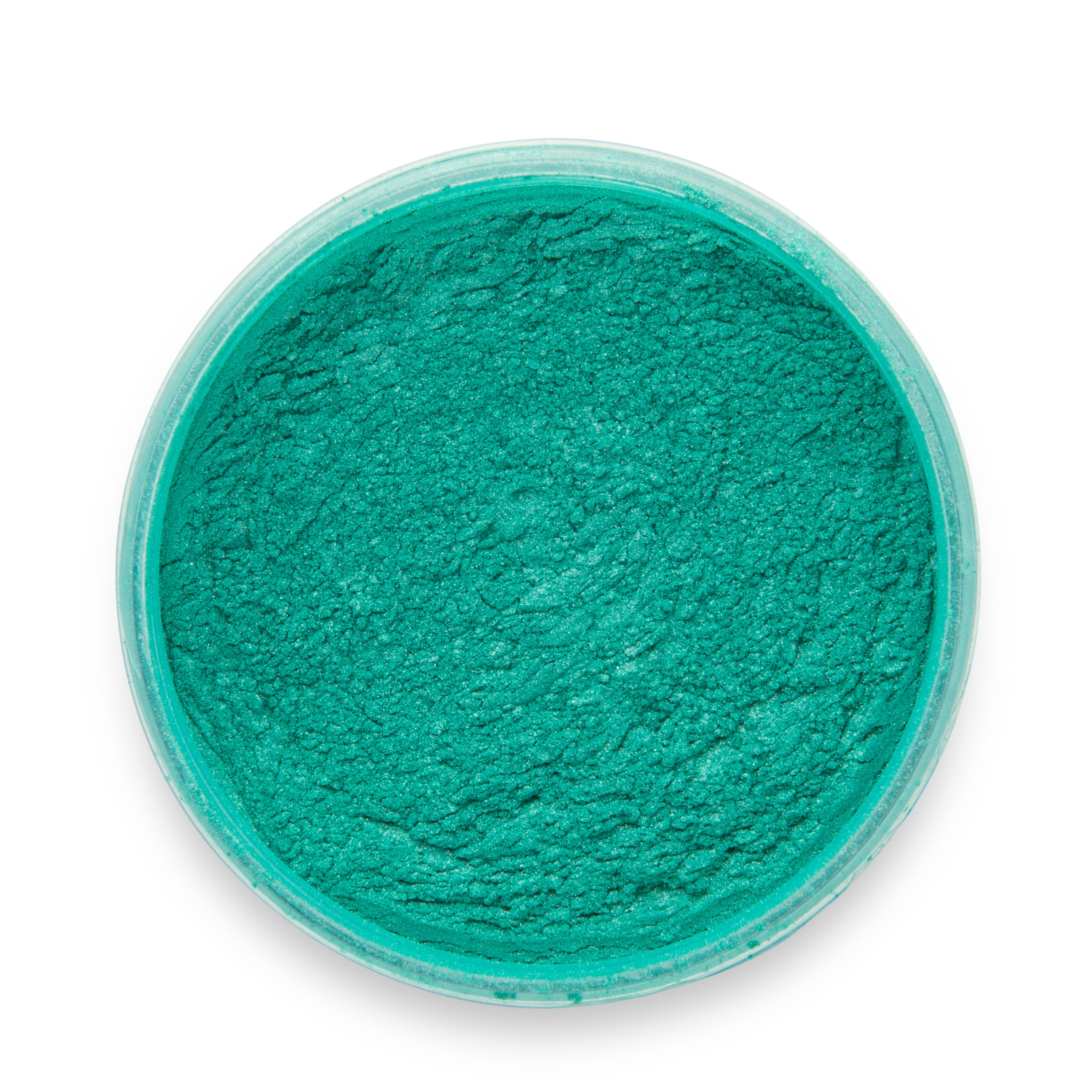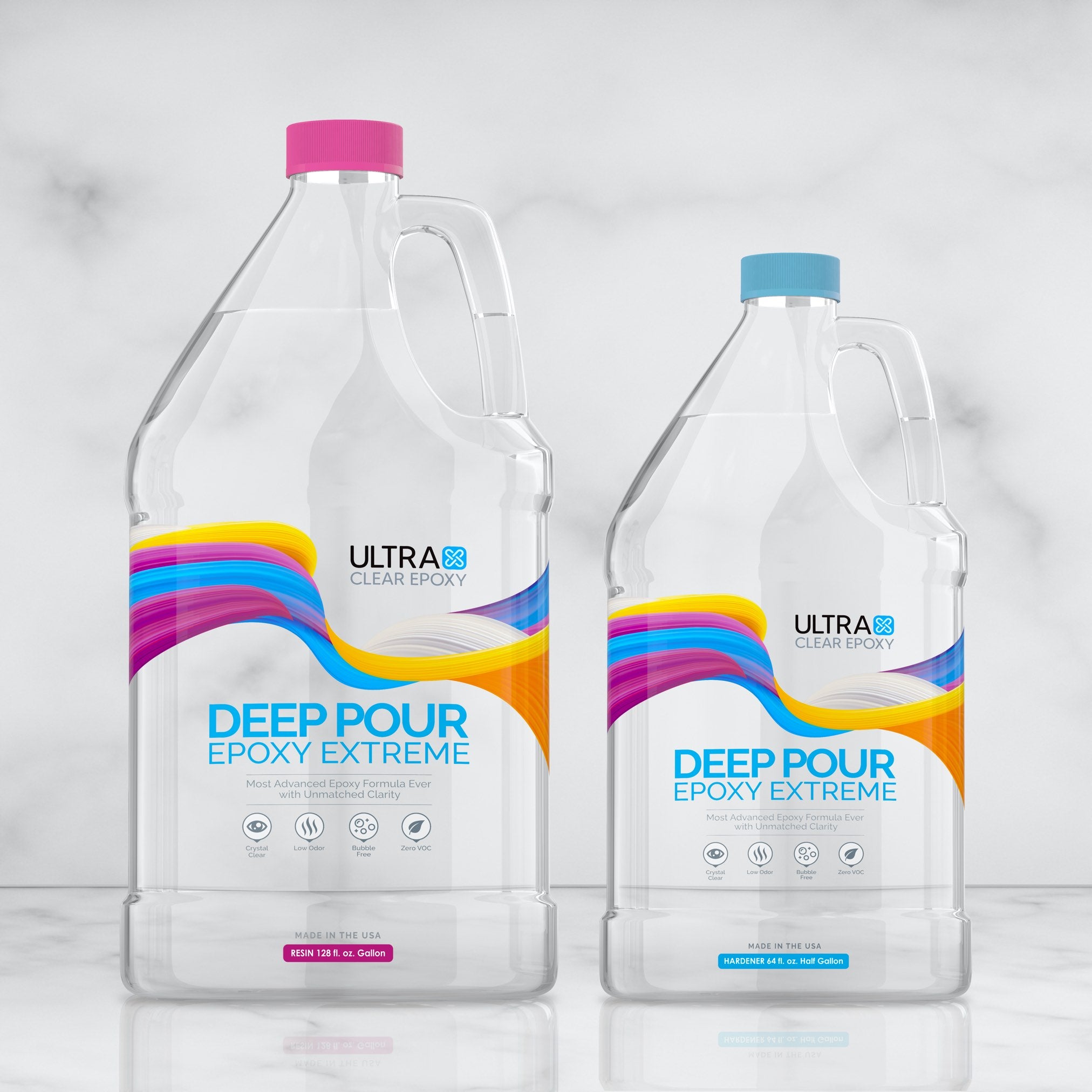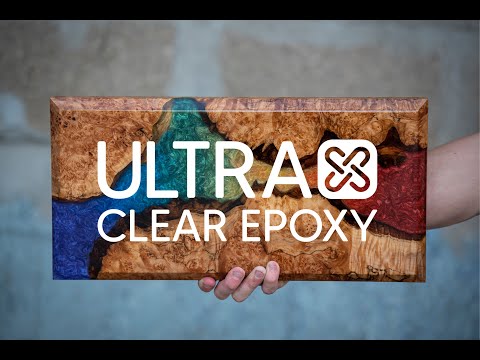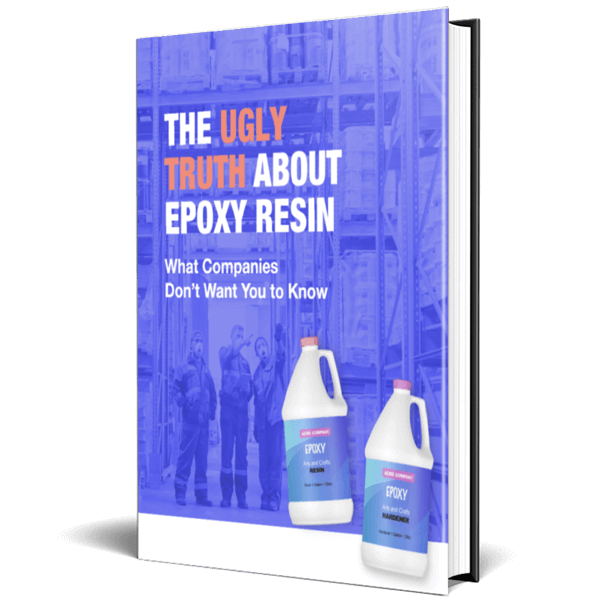A typical craft epoxy resin exhibits a striking, glass-like beauty that showcases the natural character substrate materials like wood or embedded objects. Yet what many creators most love about epoxy is its compatibility with a wide range of colorants. These colorants can be used to imbue the otherwise clear epoxy with vibrant or subtle hues, provide the epoxy a sense of depth and shimmer, or even generate intricate swirls and patterns within the finish.
In this guide, we’ll be covering the various aspects of coloring resin, including the types of epoxy colorants available, how they work, when to use them, and how to infuse your project with color that lasts.
Contents |
|
Types of Epoxy-Compatible Colorants Step-by-Step: Using Each Type of Epoxy Colorant Beyond Pigments: Other Ways to Add Color Projects That Shine with Color Additives |
What Are Epoxy Colorants?
Epoxy colorants are additives designed to mix into resin systems to produce vibrant or understated colors, shimmering effects, or even translucent finishes. These pigments and dyes are formulated to disperse evenly throughout an epoxy mixture, giving you control over the color, depth, and opacity (i.e., how see-through it is) of your final project.
Colorants enhance the aesthetic of resin creations by introducing personal expression into the piece. Whether you want a bold river table with a shimmering turquoise vein or a soft tinted background for embedded objects, using colorants allows you to adjust their projects in meaningful ways.
Types of Epoxy-Compatible Colorants
There are several reliable categories of colorants that pair well with epoxy resin systems. Each type has different characteristics that make it better suited to certain applications. Below is an overview of the most widely used epoxy-compatible colorants:
Epoxy Powder Pigments
These dry pigments are most often made with mica, a naturally occurring mineral that reflects light for a shimmering, metallic effect. Powder pigments are ideal for marbled and pearlescent looks. They blend well in epoxy and can be layered or combined for custom shades.
Resin Dyes
These concentrated liquid colorants are formulated for complete dispersion within epoxy resin. They are translucent by default and can be built up in opacity by increasing the volume of dye added. Resin dyes are best for achieving watery effects or creating a stained-glass look. They blend smoothly and easily without clumping or settling.
Acrylic Paints
While not originally designed for resin, acrylic paints can be added in small quantities to epoxy to achieve a solid, opaque color. They are best used sparingly, as overuse can interfere with the epoxy’s curing process or cause bubbling.
High-quality, water-based acrylics work best, and we recommend combinging them with a reliable, high-grade epoxy as the base to ensure a clean blend and cure.
Alcohol Inks
Alcohol inks are vibrant, fast-drying pigments dissolved in alcohol. When added to epoxy, they create stunning fluid effects and swirls. However, they should be used cautiously: excessive use may soften the cured resin or affect UV resistance.
Epoxy Colorants Chart
Use this table to easily compare the four types of colorants listed above.
| Colorant Type | Opacity | Effect Style | Best For |
|---|---|---|---|
| Epoxy Powder Pigments | Semi-opaque | Metallic, Shimmery | River tables, art resin, marbled surfaces |
| Resin Dyes | Transparent | Clean, Uniform Tint | Ocean pours, stained-glass looks |
| Acrylic Paints | Opaque | Solid, Matte | Bold colors, abstract pieces, DIY projects |
| Alcohol Inks | Translucent | Swirled, Fluid | Decorative trays, coasters, mixed-media art |
Step-by-Step: Using Each Type of Epoxy Colorant
The following step-by-step guides explain how to use each type of colorant properly with epoxy resin.
Before beginning, have you considered the following?
- Each type of colorant will react to light differently. Powder pigments tend to have a subtle shimmering effect due to reflective particles contained within.
- The colorants may seem deeper and more opaque while in the epoxy mixing container than when spread out across a surface after pouring. Try to account for that if you're aiming for an opaque finish.
- The substrate you'll be applying your epoxy to can affect the color of your epoxy. Dark wood will make colored epoxy seem darker, while it may seem lighter atop or near light wood, for instance.
Powder Pigments
-
Measure your epoxy parts and mix thoroughly, beginning as you would for an ordinary, uncolored batch.
-
Slowly add a small amount of pigment. A common ratio is 1 gram of powder per 8 fluid ounces of resin, but the ratio can be modified to your liking to achieve a desired shade.
-
Mix until fully dispersed. Use a mixing stick for small-to-medium batches or a drill mixer for large batches of about a gallon.
-
Pour slowly to preserve patterns or swirl gently for artistic effects.
Resin Dyes
-
Mix epoxy according to product instructions.
-
Add resin dye one drop at a time, stirring after each.
-
Adjust intensity by adding more dye as desired.
-
Apply using normal pouring methods.
Acrylic Paints
-
Mix epoxy as directed.
-
Add only a few drops of acrylic paint to avoid thickening or disrupting cure.
-
Stir thoroughly and test in a small area before full pour.
-
Monitor curing to ensure full hardening.
Alcohol Inks
-
Pour clear mixed epoxy into your mold or surface.
-
Drop alcohol ink onto the surface after pouring.
-
Use a heat gun or airbrush to manipulate and spread the ink.
-
Allow to cure fully without disturbing the surface.
Beyond Pigments: Other Ways to Add Color
If you're looking to add color without directly tinting the epoxy itself, there are several creative alternatives:
-
Crushed Glass or Colored Sand: Available in a wide range of colors and sizes, these can be embedded in epoxy pours for sparkle and texture.
-
Metallic Leaf or Flakes: Gold, silver, and copper leaf pieces can be suspended in epoxy to add luxury and depth. Many users apply these near the perimeter of their finish to serve as an accent.
-
Dried Flowers and Botanicals: Naturally colorful elements that preserve beautifully in clear epoxy. Organic items like this contain moisture and must first be prepared for embedment. See our guide for details.
-
Colored Stones or Pebbles: Small stones and minerals can offer a distinct contrast with a natural feel, especially in river-style pours.
These add-ins provide unique visual effects and often add a tactile dimension to your epoxy project.
Projects That Shine with Color Additives
Certain epoxy creations are ideal candidates for color enhancements and embedments. Here are some project types that make excellent use of these techniques:
-
River Tables: Using resin dyes and powder pigments, it's possible to simulate flowing water or lava effects by pouring an epoxy vein between two surfaces (e.g., parallel wooden slabs). Learn how to pour a perfect river vein here.
-
Coasters & Trays: These excellent beginner-friendly projects can make splendid use of alcohol inks, embedded leaves, and metallic flakes to produce stunning, functional art. Want to try?—Check out our resin coaster guide!
-
Wall Art Panels: Use UltraClear Art & Craft Epoxy along with any type of colorant to create your own resin art—or combine all four colorant types for layered, 3D effects!
-
Jewelry: Earrings, pendants, bracelets—and more! Mica powders and glitter offer small-scale brilliance and can be a fun way to craft your own custom jewelry. Or use resin dyes for a translucent creations that lets light shine through it.
-
Table Tops with Inlays: Fill voids or cracks with colored resin for contrast.
-
Resin Lamps: Use glow powder or translucent dyes to create ambient light effects.
Matching your color additions to the function and form of your piece can dramatically enhance its visual appeal.

The Hidden Flaws with Cheap Epoxy Products
Choosing the wrong epoxy product can undermine your entire color-enhancement project. Low-cost, budget-brand epoxies—especially those produced overseas and imported—tend to cut corners in material quality and consistency. These products may have yellowing agents, insufficient UV resistance, or poor bonding strength. That means colors can fade, cloud, or shift with time.
Quality control is another major concern. Some low-grade epoxies arrive with inconsistent curing times, contaminated batches, or undisclosed additives. This unpredictability can cause bubbling, cracking, or blotchy coloring in your finished work.
There are also potential safety issues. Inferior epoxies may emit stronger fumes due to a lack of VOC regulations and may not be properly labeled. Exposure to poorly formulated epoxy can cause skin irritation, respiratory issues, or allergic reactions, especially during mixing and pouring.
Learn more about why your choice of epoxy matters here.
Why UltraClear Epoxy Is the Trusted Choice
At UltraClear Epoxy, our products are manufactured in the U.S.A. with strict quality standards and clarity-focused engineering. Moreover, we hold ourselves to even higher expectations, with deliberate quality assurance performed for every batch during production.
Whether you choose UltraClear Art & Craft Epoxy for intricate pours, UltraClear Deep Pour Epoxy for river tables, or UltraClear Bar & Table Top Epoxy for a rock-solid topcoat, you’re getting a product designed to maintain vibrant color, resist yellowing, and deliver long-term durability. The clean finish also makes it easy to wipe down or polish, with far less maintenance required over time.
FAQs: Coloring Epoxy Resin
Question #1: Can I mix multiple types of colorants in one project?
Yes, you can combine different colorants like mica powder and resin dyes, but do so carefully and test beforehand. Over-mixing can muddy the results.
We recommend only using one type of colorant per mixed batch of epoxy.
Question #2: How much pigment should I add to epoxy?
A good rule of thumb is to use no more than 6% pigment by weight relative to the epoxy. Too much can weaken the resin or prevent proper curing.
Question #3: Will epoxy change color as it cures?
Most colorants stabilize during curing, but alcohol inks and some dyes may shift slightly. Always do a test pour first.
Question #4: Are all mica powders safe for epoxy?
Not all mica powders are created equal. Choose high-quality mica powders specifically labeled as resin-compatible, such as those found in the Pigmently Epoxy Pigments Collection.
Question #5: Can I color UltraClear Bar & Table Top Epoxy?
Yes! This epoxy works exceptionally well with most colorants, especially mica powders and resin dyes. Use them sparingly to maintain clarity.
Question #6: Which epoxy is best for colorful art pours?
While all UltraClear products are fully receptive to colorants, our UltraClear Art & Craft Epoxy is designed for resin art projects involving colorful pours due to its smooth finish, efficient curing time, and versatile application.
Learn more about Art & Craft Epoxy here.
Question #7: How do I create a metallic swirl effect?
Use mica powder, pour the epoxy in layers, and use a toothpick or heat gun to manipulate the swirl before curing.
Question #8: Can colored epoxy be used outdoors?
Yes, but make sure the epoxy is UV-resistant. UltraClear epoxies are formulated to resist yellowing, but no epoxy is immune. Applying a urethane topcoat to your finished project can also help preserve color.
Have Questions? Want Advice? We're Here to Help!
If you have any questions about coloring epoxy resin, or if you'd like assistance in planning an epoxy project, please reach out to us at UltraClear Epoxy—our epoxy experts are ready to assist!
You can contact us via phone or email here. During business hours, you can also text chat online with one of our resin specialists by clicking the Help button at the bottom of your screen.
In our online store, you'll find a variety of useful tools and supplies, ideal for resin projects, plus our award-winning UltraClear Bar & Table Top Epoxy and our UltraClear Deep Pour Epoxy.
UltraClear Epoxy—Trusted by over 1 Million+ Happy Customers

